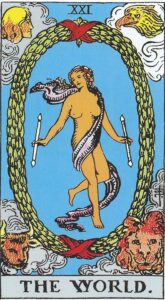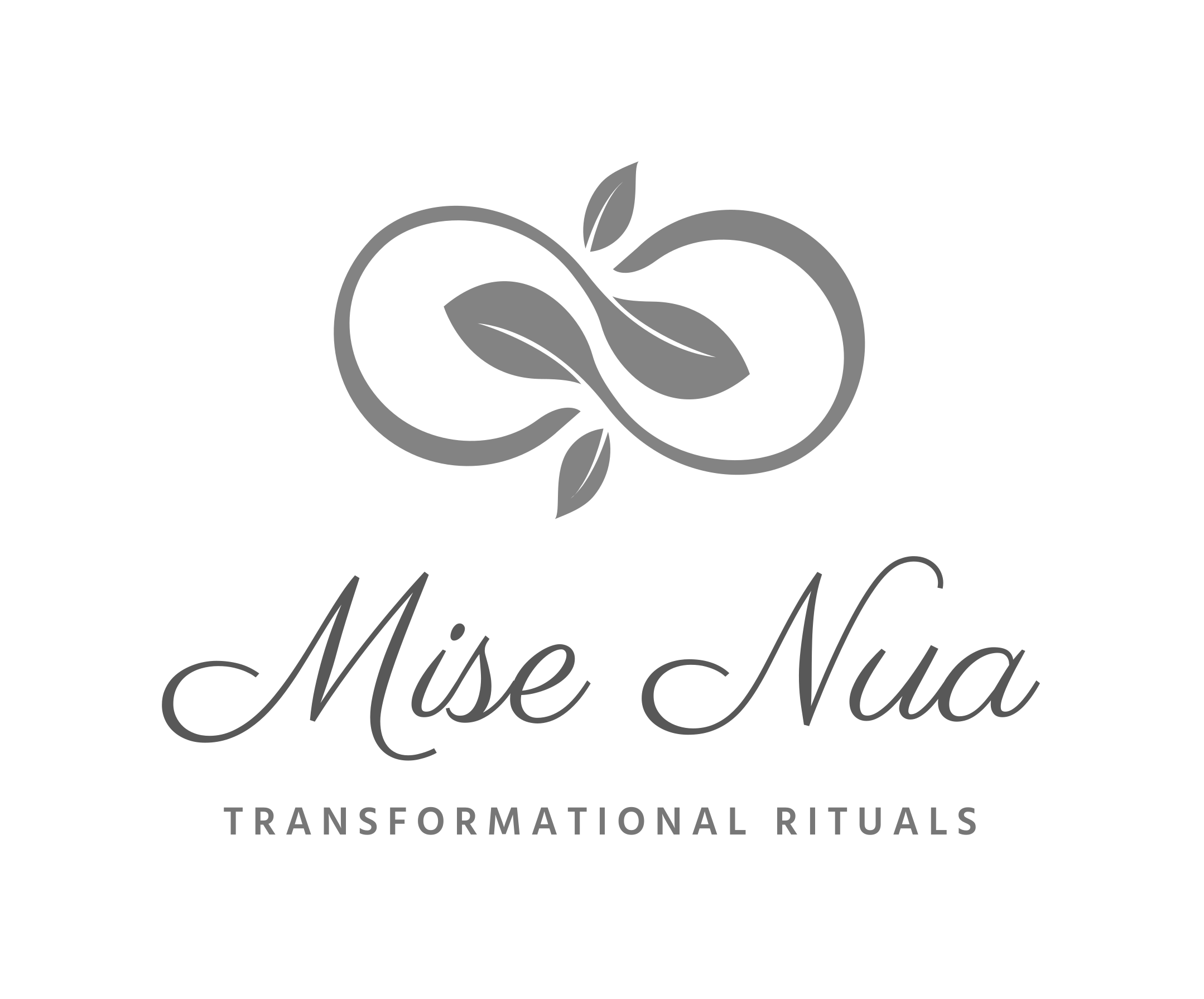Tarot Card Readings Louth
Book a Tarot Card Reading Today with Nuala and Unlock the Secrets of Your Future.
Tarot Card Readings by Nuala O'Brien
Tarot readings can provide a sense of healing and closure, helping you process emotions and move forward from past experiences.
What are the benefits of a Tarot card reading?
There are several benefits of a tarot card reading, including:
Clarity and guidance: Tarot readings can provide insight and clarity into a situation, helping you make informed decisions and navigate life’s challenges.

Thank you Nuala

Nuala did a reading for me and words cannot do the results justice. She mentioned my health and that unexpected money was coming my way. Typical I thought. But in all honesty, I was in hospital two weeks later and a month after that a small sum of money did come my way, just in time for Christmas. With her personal warmth and understanding, I have come to view the world of true psychics as something to be enjoyed and learn from. Nuala is the real deal, don’t miss this opportunity. Thanks, Nuala.
Great Stuff

What can I say about Psychic Nuala that hasn’t been already said, she is the real deal, no bull no shyte, just a clear and accurate reading. So friendly and approachable, it’s like sitting with an old friend. A great investment.
Thank you Nuala

Nuala is very thorough and takes her time to explain the cards and the effect they have on each other. I found her to be very honest and caring and I can’t recommend her highly enough.
How wonderful

Nuala is so unbelievably gifted. To be honest I can’t rate her highly enough! What she did for me was very in-depth and so accurate. I was shocked at how quickly she picked up the energy of the person I was enquiring about. There is no way she could have guessed at this person’s problem, but she was spot on. I have to make a return visit because I just can’t leave it there, Nuala is absolutely brilliant.
Self-discovery: Tarot readings can help you better understand yourself and your emotions, leading to personal growth and self-awareness.
Validation: Tarot readings can provide validation and confirmation of your intuition, helping you trust your instincts and make decisions with confidence.
Spiritual growth: Tarot readings can be a tool for spiritual growth and exploration, helping you connect with your higher self and the universe.
Healing: Tarot readings can provide a sense of healing and closure, helping you process emotions and move forward from past experiences.
Overall, tarot readings can be a valuable tool for personal growth, self-discovery, and navigating life’s challenges.
How accurate is the Tarot cards predicting love and romance?
It’s important to keep in mind that tarot readings are not a guarantee of future events and should not be relied upon as a sole source of guidance.
Tarot readings are based on interpretation and intuition, and the accuracy of a reading can depend on the skill and experience of the reader, as well as the individual’s own interpretation of the cards. It’s also important to remember that the future is not set in stone, and our actions and decisions can influence the outcome of a situation.
That being said, tarot readings can provide valuable insights and guidance on matters of the heart, helping individuals gain clarity and perspective on their relationships and potential paths forward. It’s important to approach tarot readings with an open mind and a willingness to explore different possibilities.
Is the Tarot card reading safe?
Yes, Tarot card reading is generally considered safe. Tarot readings are non-invasive and do not involve any physical contact, making them a safe and accessible option for individuals seeking guidance and insight.
However, it’s important to keep in mind that Tarot readings should be conducted by a trained and experienced reader who follows ethical guidelines and respects the privacy and well-being of their clients. It’s also important to approach Tarot readings with an open mind and a willingness to explore different possibilities, rather than relying on them as a sole source of guidance.
If you have any concerns or questions about Tarot readings, it’s always a good idea to do your research and seek out a reputable and experienced reader who can provide you with the guidance and support you need.
Tarot Card Readings Louth

How long does a Tarot card reading last?
The length of a Tarot card session can vary depending on several factors, including the reader’s style, the number of cards being used, and the complexity of the questions being asked.
In general, a Tarot card session can last anywhere from 30 minutes to an hour or longer. Some readers may offer shorter or longer sessions depending on the client’s needs and preferences.
It’s important to communicate with your reader beforehand to discuss the length of the session and any specific concerns or questions you may have. This can help ensure that you get the most out of your Tarot card reading and that you feel comfortable and supported throughout the process.
What should I expect from a Tarot card reading?
During a Tarot card reading, you can expect the following:
Introductions: The reader will likely introduce themselves and explain their approach to Tarot readings. They may also ask you to share a bit about yourself and what you hope to gain from the reading.
Questions: The reader will ask you questions about your life, relationships, and any specific concerns or questions you may have. It’s important to be open and honest with the reader, as this can help them provide more accurate and insightful readings.
Card selection: The reader will shuffle the Tarot deck and select a certain number of cards based on the questions being asked. The cards will be laid out in a specific pattern or spread, and the reader will interpret their meanings based on their position in the spread and their relationship to each other.
Interpretation: The reader will interpret the meanings of the cards and provide insights and guidance based on their interpretation. They may also ask you questions or encourage you to reflect on the messages of the cards.
Conclusion: The reader will conclude the reading by summarizing their insights and offering any final thoughts or advice. They may also provide you with resources or recommendations for further exploration or support.
It’s important to keep in mind that Tarot readings are not a guarantee of future events and should not be relied upon as a sole source of guidance. Tarot readings can provide valuable insights and guidance, but it’s up to you to take action and make decisions based on your own intuition and free will.
What is the average cost of a Tarot card reading?
The cost of a Tarot card reading can vary depending on several factors, including the reader’s experience and expertise, the length of the session, and the location of the reading.
In general, a Tarot card reading can cost anywhere from €30 to €200 or more, with the average cost falling between €50 and €100. Some readers may offer shorter or longer sessions at different price points, and some may offer discounts for multiple sessions or package deals.
It’s important to do your research and choose a reputable and experienced reader who offers fair pricing and transparent policies. You may also want to consider factors like location, availability, and the reader’s approach to Tarot readings when making your decision.
What is the time scale of a Tarot Card Reading?
The time scale of a Tarot card reading can vary depending on several factors, including the reader’s style, the number of cards being used, and the complexity of the questions being asked.
In general, a Tarot card reading can take anywhere from 30 minutes to an hour or longer. Some readers may offer shorter or longer sessions depending on the client’s needs and preferences.
It’s important to communicate with your reader beforehand to discuss the length of the session and any specific concerns or questions you may have. This can help ensure that you get the most out of your Tarot card reading and that you feel comfortable and supported throughout the process.
Can a Tarot Card readings predict the future?
Tarot card readings are based on interpretation and intuition, and the accuracy of a reading can depend on the skill and experience of the reader, as well as the individual’s own interpretation of the cards. It’s also important to remember that the future is not set in stone, and our actions and decisions can influence the outcome of a situation.
That being said, Tarot card readings can provide valuable insights and guidance on potential paths forward based on the current circumstances and energies surrounding the individual. The cards can provide clarity on the present situation and help the individual make informed decisions about their future.
It’s important to approach Tarot card readings with an open mind and a willingness to explore different possibilities, rather than relying on them as a sole source of guidance or a guarantee of future events.
What is a Tarot Card party?
A Tarot card party is a social gathering where a Tarot card reader provides individual or group readings to the guests. It can be a fun and interactive way to explore the Tarot and gain insights into one’s life and relationships.
During a Tarot card party, the reader may set up a private area for readings or move around the room, providing individual readings to guests who are interested. The readings may be short or long, depending on the reader’s style and the preferences of the guests.
Tarot card parties can be held in a variety of settings, including private homes, restaurants, or event spaces. They can be a great way to celebrate a special occasion, such as a birthday or bachelorette party, or simply a fun way to connect with friends and explore the Tarot together.
It’s important to choose a reputable and experienced reader for your Tarot card party and to communicate with your guests beforehand to ensure that everyone is comfortable and respectful of each other’s privacy.
What to expect from a Tarot Card reading?
During a Tarot card reading, you can expect the following:
Introductions: The reader will likely introduce themselves and explain their approach to Tarot readings. They may also ask you to share a bit about yourself and what you hope to gain from the reading.
Questions: The reader will ask you questions about your life, relationships, and any specific concerns or questions you may have. It’s important to be open and honest with the reader, as this can help them provide more accurate and insightful readings.
Card selection: The reader will shuffle the Tarot deck and select a certain number of cards based on the questions being asked. The cards will be laid out in a specific pattern or spread, and the reader will interpret their meanings based on their position in the spread and their relationship to each other.
Interpretation: The reader will interpret the meanings of the cards and provide insights and guidance based on their interpretation. They may also ask you questions or encourage you to reflect on the messages of the cards.
Conclusion: The reader will conclude the reading by summarizing their insights and offering any final thoughts or advice. They may also provide you with resources or recommendations for further exploration or support.
It’s important to keep in mind that Tarot readings are not a guarantee of future events and should not be relied upon as a sole source of guidance. Tarot readings can provide valuable insights and guidance, but it’s up to you to take action and make decisions based on your own intuition and free will.
What is the Minor Arcana in Tarot?
In Tarot, the minor arcana is one of the two main categories of cards, the other being the major arcana. The minor arcana consists of 56 cards that are divided into four suits: Wands, Cups, Swords, and Pentacles.
Each suit represents a different aspect of life, with Wands representing creativity and inspiration, Cups representing emotions and relationships, Swords representing intellect and communication, and Pentacles representing material possessions and wealth.
Within each suit, there are 14 cards, including ten numbered cards (Ace through 10) and four court cards (Page, Knight, Queen, and King). The numbered cards represent different stages or aspects of the suit’s theme, while the court cards represent different personality types or individuals who may be involved in the situation being explored.
The minor arcana cards are often used to provide more specific details and insights into a situation, while the major arcana cards are used to explore broader themes and archetypes. Together, the minor and major arcana cards provide a comprehensive and nuanced tool for exploring the complexities of life and the human experience.
What is the Major Arcana in Tarot
In Tarot, the major arcana is one of the two main categories of cards, the other being the minor arcana. The major arcana consists of 22 cards that are numbered from 0 to 21, with each card representing a different archetype or universal theme.
The major arcana cards are often considered the most powerful and significant cards in the Tarot deck, as they represent major life events, spiritual lessons, and transformative experiences. Each card has a unique meaning and symbolism, and they are often used to explore the deeper aspects of the self and the universe.
Some of the most well-known major arcana cards include The Fool (representing new beginnings and taking risks), The Magician (representing manifestation and power), The High Priestess (representing intuition and hidden knowledge), The Empress (representing abundance and nurturing), The Emperor (representing authority and structure), The Lovers (representing relationships and choices), The Tower (representing upheaval and transformation), and The World (representing completion and wholeness).
Together, the major and minor arcana cards provide a comprehensive and nuanced tool for exploring the complexities of life and the human experience.
How reliable is Tarot Card reading?
Tarot card readings are based on interpretation and intuition, and the accuracy of a reading can depend on the skill and experience of the reader, as well as the individual’s own interpretation of the cards. It’s also important to remember that the future is not set in stone, and our actions and decisions can influence the outcome of a situation.
That being said, tarot card readings can provide valuable insights and guidance on potential paths forward based on the current circumstances and energies surrounding the individual. The cards can provide clarity on the present situation and help the individual make informed decisions about their future.
It’s important to approach tarot card readings with an open mind and a willingness to explore different possibilities, rather than relying on them as a sole source of guidance or a guarantee of future events. It’s also important to choose a reputable and experienced reader who follows ethical guidelines and respects the privacy and well-being of their clients.
How many Tarot Cards should I pull for a reading?
The number of Tarot cards you should pull for a reading depends on the type of reading you want and the specific questions you have.
For a simple one-card reading, you can pull a single card to gain insight into a specific question or situation. This can be a quick and easy way to gain clarity and guidance on a particular issue.
For a more in-depth reading, you may want to pull multiple cards to explore different aspects of the situation. A three-card spread, for example, can represent the past, present, and future of the situation, while a ten-card spread can provide a more comprehensive overview of the situation and potential paths forward.
It’s important to communicate with your reader beforehand to discuss the type of reading you want and the number of cards that will be pulled. This can help ensure that you get the most out of your Tarot card reading and that you feel comfortable and supported throughout the process.
When should you not use Tarot Cards?
There are certain situations where Tarot Card readings may not be appropriate or advisable. Here are some examples:
In cases of severe mental illness or emotional distress: Tarot readings are not a substitute for professional mental health treatment, and should not be used to diagnose or treat mental illness or severe emotional distress. If you are experiencing severe symptoms, it’s important to seek the help of a qualified mental health professional.
When seeking a definitive answer or prediction: Tarot readings are not a guarantee of future events and should not be relied upon as a sole source of guidance. If you are seeking a definitive answer or prediction, it’s important to remember that the future is not set in stone, and our actions and decisions can influence the outcome of a situation.
When seeking to control or manipulate others: Tarot readings should not be used to control or manipulate others. It’s important to approach Tarot readings with an open mind and a willingness to explore different possibilities, rather than using them as a tool to exert power or influence over others.
When feeling skeptical or closed off: Tarot readings require an open and receptive mindset in order to be effective. If you are feeling skeptical or closed off, it may be best to wait until you feel more open and receptive before seeking a Tarot reading.
It’s important to approach Tarot readings with respect and a willingness to explore different possibilities, and to seek out a qualified and experienced reader who follows ethical guidelines and respects the privacy and well-being of their clients.
When not to read Tarot Cards?
There are certain situations where it may not be appropriate or advisable to read Tarot cards. Here are some examples:
When you are feeling emotionally or mentally overwhelmed: If you are feeling overwhelmed or emotionally distressed, it may not be the best time to read Tarot cards. It’s important to take care of your own well-being first and seek support if needed.
When you are under the influence of drugs or alcohol: Tarot readings require a clear and focused mindset in order to be effective. If you are under the influence of drugs or alcohol, it may be best to wait until you are sober before reading Tarot cards.
When you are feeling skeptical or closed off: Tarot readings require an open and receptive mindset in order to be effective. If you are feeling skeptical or closed off, it may be best to wait until you feel more open and receptive before reading Tarot cards.
When you are seeking a definitive answer or prediction: Tarot readings are not a guarantee of future events and should not be relied upon as a sole source of guidance. If you are seeking a definitive answer or prediction, it’s important to remember that the future is not set in stone, and our actions and decisions can influence the outcome of a situation.
When you are not trained or experienced in reading Tarot cards: Tarot readings require a certain level of training and experience in order to be effective and ethical. If you are not trained or experienced in reading Tarot cards, it may be best to seek out a qualified and experienced reader instead.
It’s important to approach Tarot readings with respect and a willingness to explore different possibilities, and to seek out a qualified and experienced reader who follows ethical guidelines and respects the privacy and well-being of their clients.
Where did the Tarot Cards originate?
The origins of Tarot cards are not entirely clear, but they are believed to have originated in northern Italy in the 15th century. The earliest known Tarot decks were used for playing games rather than divination, and were similar in structure to modern playing cards.
Over time, Tarot cards began to be used for divination and spiritual exploration, with different decks featuring different symbolism and interpretations. Some of the most well-known Tarot decks include the Rider-Waite-Smith deck, the Marseille deck, and the Thoth deck.
The symbolism and meanings of Tarot cards are believed to have been influenced by a variety of spiritual and philosophical traditions, including Kabbalah, astrology, alchemy, and Hermeticism. Today, Tarot cards are used by people around the world for personal growth, spiritual exploration, and divination.
What are the cons of Tarot?
While Tarot can be a valuable tool for personal growth and self-discovery, there are some potential drawbacks or cons to consider. Here are some examples:
Misinterpretation: Tarot readings are based on interpretation and intuition, and the accuracy of a reading can depend on the skill and experience of the reader, as well as the individual’s own interpretation of the cards. It’s important to approach Tarot readings with an open mind and a willingness to explore different possibilities, rather than relying on them as a sole source of guidance or a guarantee of future events.
Dependence: Some people may become overly dependent on Tarot readings for guidance, rather than trusting their own intuition and decision-making abilities. It’s important to remember that Tarot readings are just one tool for gaining insight and guidance, and that ultimately, we are responsible for our own choices and actions.
Fear: Some people may be afraid of Tarot readings or view them as taboo or dangerous. It’s important to approach Tarot readings with an open and curious mindset, and to seek out a qualified and experienced reader who follows ethical guidelines and respects the privacy and well-being of their clients.
Scams: Unfortunately, there are some unscrupulous individuals who may use Tarot readings as a means of scamming or manipulating others. It’s important to choose a reputable and experienced reader who follows ethical guidelines and respects the privacy and well-being of their clients.
Cultural Appropriation: Tarot cards are based on a rich history of symbolism and meaning, and it’s important to approach them with respect and cultural sensitivity. Some people may view Tarot readings as a form of cultural appropriation if they are not approached with respect for the cultural traditions and practices from which they originated.
It’s important to approach Tarot readings with an open and curious mindset, and to seek out a qualified and experienced reader who follows ethical guidelines and respects the privacy and well-being of their clients.
What should I know before getting a Tarot card reading?
Before getting a Tarot reading, here are some things to keep in mind:
Choose a reputable and experienced reader: It’s important to choose a reader who is qualified and experienced in Tarot readings. Look for reviews or recommendations, and ensure that the reader follows ethical guidelines and respects the privacy and well-being of their clients.
Be clear on your intentions: Before the reading, take some time to reflect on your intentions and what you hope to gain from the reading. This can help the reader provide a more focused and insightful reading.
Keep an open mind: Tarot readings are based on interpretation and intuition, and the accuracy of a reading can depend on the skill and experience of the reader, as well as the individual’s own interpretation of the cards. It’s important to approach Tarot readings with an open mind and a willingness to explore different possibilities.
Be respectful and honest: Tarot readings require a certain level of trust and respect between the reader and the client. Be honest and respectful in your interactions with the reader, and avoid asking questions that are overly personal or inappropriate.
Take responsibility for your own choices and actions: Tarot readings can provide valuable insights and guidance, but it’s up to you to take action and make decisions based on your own intuition and free will. Remember that the future is not set in stone, and our actions and decisions can influence the outcome of a situation.
By keeping these things in mind, you can approach your Tarot reading with a clear and open mindset, and gain valuable insights and guidance for your personal growth and self-discovery.
Should you smudge Tarot Cards?
Smudging is a traditional practice that involves burning herbs, such as sage or palo santo, to clear negative energy and purify a space or object. Some people choose to smudge their Tarot cards before or after a reading to clear any negative energy and create a positive and sacred space for the reading.
Whether or not to smudge your Tarot cards is a personal choice. Some people find it helpful to clear the energy of their cards before a reading, while others do not feel it is necessary. If you do choose to smudge your Tarot cards, it’s important to do so safely and respectfully, and to use herbs that are sustainably sourced and harvested.
Regardless of whether or not you choose to smudge your Tarot cards, it’s important to approach them with respect and care, and to store them in a safe and sacred space when not in use. This can help maintain the energy and integrity of the cards, and ensure that they continue to provide valuable insights and guidance for your personal growth and self-discovery.
Can Tarot Cards really predict the future?
Tarot cards are a tool for divination and spiritual exploration, and they are based on interpretation and intuition. The accuracy of a Tarot reading can depend on the skill and experience of the reader, as well as the individual’s own interpretation of the cards. It’s important to approach Tarot readings with an open mind and a willingness to explore different possibilities, rather than relying on them as a sole source of guidance or a guarantee of future events.
It’s also important to remember that the future is not set in stone, and our actions and decisions can influence the outcome of a situation. Tarot readings can provide valuable insights and guidance on potential paths forward based on the current circumstances and energies surrounding the individual, but they should not be viewed as a definitive prediction of future events.
Ultimately, Tarot cards can be a valuable tool for personal growth and self-discovery, but it’s important to approach them with respect and care, and to seek out a qualified and experienced reader who follows ethical guidelines and respects the privacy and well-being of their clients.
What each Tarot Card symbolizes?
Each Tarot card in a deck has its own unique symbolism and meaning. Here’s a brief overview of the symbolism and meaning of the cards in the Major Arcana:
The Fool: new beginnings, taking risks, innocence, spontaneity
The Magician: manifestation, creativity, power, action
The High Priestess: intuition, hidden knowledge, mystery, secrets
The Empress: nurturing, abundance, fertility, motherhood
The Emperor: authority, structure, leadership, stability
The Hierophant: tradition, religion, spirituality, guidance
The Lovers: relationships, choices, harmony, balance
The Chariot: determination, willpower, success, victory
Strength: inner strength, courage, self-control, compassion
The Hermit: solitude, introspection, wisdom, spiritual guidance
The Wheel of Fortune: change, cycles, destiny, karma
Justice: fairness, balance, truth, integrity
The Hanged Man: surrender, letting go, sacrifice, spiritual awakening
Death: transformation, endings, rebirth, change
Temperance: balance, harmony, moderation, self-control
The Devil: temptation, materialism, addiction, bondage
The Tower: upheaval, chaos, crisis, transformation
The Star: hope, inspiration, renewal, faith
The Moon: intuition, emotions, cycles, mystery
The Sun: positivity, vitality, success, happiness
Judgment: rebirth, renewal, awakening, spiritual growth
The World: completion, wholeness, fulfillment, achievement
The symbolism and meaning of the cards in the Minor Arcana can vary depending on the specific deck and tradition.
A brief meaning the complete Tarot deck.
The complete Tarot deck consists of 78 cards, divided into two main categories: the Major Arcana and the Minor Arcana. Here’s a brief overview of the symbolism and meaning of the cards:
Major Arcana (22 cards): The Major Arcana cards represent major life events, archetypes, and spiritual lessons. They are numbered from 0 to 21, and each card has its own unique symbolism and meaning.
Minor Arcana (56 cards): The Minor Arcana cards are divided into four suits: Wands, Cups, Swords, and Pentacles (or Coins). Each suit represents a different aspect of life, such as creativity (Wands), emotions (Cups), intellect (Swords), and material wealth (Pentacles). Each suit consists of 14 cards, including ten numbered cards and four court cards (Page, Knight, Queen, and King).
The numbered cards in each suit represent different levels of energy or experience, while the court cards represent different personalities or archetypes. The symbolism and meaning of the cards in each suit can vary depending on the specific deck and tradition.
Overall, the Tarot deck is a tool for divination and spiritual exploration, and each card can provide insights and guidance on different aspects of life and the human experience. The accuracy of a Tarot reading can depend on the skill and experience of the reader, as well as the individual’s own interpretation of the cards. It’s important to approach Tarot readings with an open mind and a willingness to explore different possibilities.
If you would like to know more about the Tarot, then just click the button below and get in contact with Psychic Nuala.
